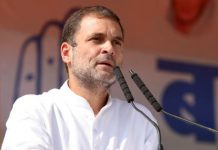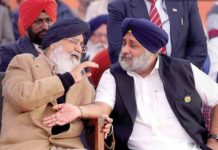THE BIGGEST Indian animated feature, Arjun: The Warrior Prince, is set to be a summer blockbuster. Director Arnab Chaudhuri, 40, talks to Aradhna Wal about scaling animation for adults with a story every child knows.
EDITED EXCERPTS FROM AN INTERVIEW:

Tell us about the project.
It is a huge film. It took us three years to make it. Ronnie (Screwvala) approached me with the idea of a film on Arjun and I jumped at it. Common depictions of the Mahabharata are so formal. We’ve used the story to make a big martial arts spectacle. In that sense it’s quite a contemporary take. It’s not just a comedy for kids.
Why tag it ‘The Untold Story’?
It’s about the approach. People think of Arjun as a hero without flaws. But he was a man involved in a power struggle. Before that he was a boy who was a very talented marksman. There is a big difference between being able to hit the target and being a warrior leading an army into battle. We deal with his insecurity, doubt, his transformation and his coming of age. The same with the other Pandavas. What you read and what you see, they’re fine upstanding characters. That is boring. How do you create differences between them? Bhim and Yudhishthir bicker, like brothers would.
Did you use a particular Mahabharata text?
We used the definitive Pune edition of theMahabharata. Everything is said three or four times, so that’s a great start-off document. A huge influence was Irawati Karve’s Yuganta. She wrote about these characters in a very human way, sometimes in first person. You really get the personality she’s projecting.
What was your selection process from such a massive epic?
We changed our minds about Eklavya 10 times. It was hard to focus on Arjun in the dice game scene, because the lead is taken by Yudhishtir, Duryodhan and Shakuni. How do you create the dynamics without putting the protagonist in the background? But it’s an advantage that people have familiar reference points. You can establish back stories economically.
Explain the animation process and the technology.
For the dialogue, we worked with Ila Arun and KK Raina’s theatre troupe for two months in Mumbai. We performed the script like a play on a soundstage, and recorded it with three cameras. You get live dynamics in the audio texture. Voices sound different in different postures. Getting that was critical. We needed the intense rehearsals and time, and avoided a star cast. For the fight scenes, we engaged one martial arts troupe from Kerala and one from Manipur. We told them broadly how the fight would go, but let them at each other’s throats unrehearsed, and shot that. To shoot horses we went to Rajasthan to a stud farm and studied them galloping, racing and racing chariots. Arjun is based on the video referencing of 10 to 12 different people. The swayamvar scene was particularly hard; getting the correct body positions to fire an arrow under water. That’s my favourite scene.
Why is this new?
The technology has been around, but it’s not been done on this scale. The swayamvar scene has nearly 15,000 moving characters in the big crowd shots. That’s crazy and unprecedented.
What is the current state of India’s animation industry?
It’s growing. We started in the 1960s but stayed pretty plateaued for a while. Our television consumption of animation is huge. The entire kids’ genre is based on a voracious appetite. About 20 to 25 of them are Indian shows. Five years ago, there were three. Our studios and product quality are world class. The industry is poised for big moments. This is one of them. Here’s a big film, made entirely in India, done with conviction.
The animation looks gorgeous but distinctly old school.
We’ve consciously gone for a classical style of animation. But in that handmade environment we wanted to create camera work that moves like it would in the real world. This is an almost paperless movie. The characters are CG (computer graphics) characters; we’ve tool-shaded them to make them look hand-drawn. The backgrounds are hand-painted. We built the 3D mesh and then the finishing was done by these really great painters, pixel by pixel.
What’s the motivation?
I’m an animator, it’s what I’ve always wanted to do. I love handmade stuff, it’s gorgeous. I like making things look like a painting come to life.
Aradhna Wal is a Sub Editor with Tehelka.
aradhna@tehelka.com













